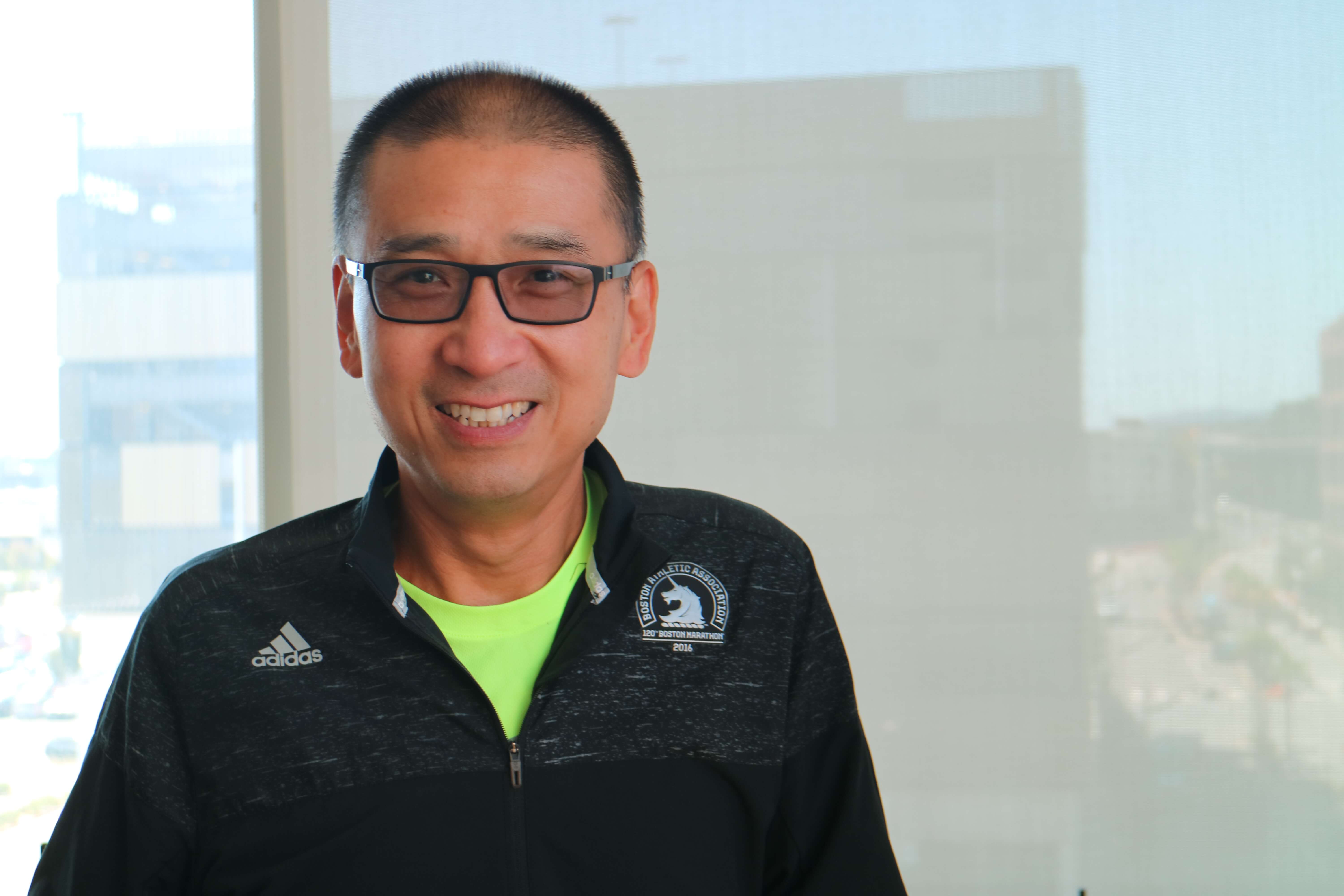
Q: What do you do in your work?
A: We are a structural biology lab. We mostly use electron microscopy to study structures of macromolecules. The mainstream technique in structural biology was a x-ray crystallography and another is a cryo-microscopy, cryo-EM, which is a minor one because the solution is typically relatively poor compared to the other method.
In the last few years, around 2010, we worked with David Agard, who led a campaign to develop a new camera technology for microscopy and it became commercially available around 2012-2013. We worked with him on a number of technologies that used his new microscopy camera to improve the image quality of the data we recorded. The consequence of that is now the resolution of cryo-EM has reached atomic resolution.
Around the same time in 2013 we worked with the David Julius lab and determined the structure of an ion channel, TRPV1. It’s a channel that senses heat. This channel was identified by the Julius lab in 1997 and since then, there are so many labs around the world that have tried to get the atomic structure of the channel, but failed. So we finally worked together using this method, and for the first time determined a membrane protein structure that other people could not get for many years. Basically, the technology really revolutionized the field and the membrane protein. So we called it a “resolution revolution.”
The goal is to understand a complex biological process at a structural, molecular and atomic level and understand how the biological process happens. It helps to expand physiology. Technologically, we also want to push it to another level so we can work on more complex systems and facilitate drug discovery and design.
Q: What’s your favorite part about being a scientist?
A: It’s exciting to understand a process and then be the first to see things that no one has ever seen before. Being part of the faculty also means that we get to enjoy intellectual freedom and can think about things that are way out there and carry out research to try to understand certain things, which is an opportunity you might not get if working in another field.
Q: What have you created or discovered that you are most proud of or excited about?
A: During the project that we worked on with David Agard, we developed a software that we can benefit from by using the new image camera to improve the image quality. That software was the first such kind of general software that anyone could use. Ever since, most labs working in this area have been using it. We published a paper in the middle of 2013 and up to now it has already gotten about 600 citations.
The other thing is the TRPV1. The impact has affected several frontiers. One is that in terms of the biology, this is the first structure of the entire channel family that enables so many other studies. I went to a meeting once and almost every poster had our structure on it, and that feels really good because it means it has a very big impact and people are really using the information we provided. Technologically, it was also the first time that we really shocked the crystallography community because they always only saw the EM solutions getting higher and higher. So it was like a “if I can do it, you can do it too.” It encouraged them to change their strategy and shift their efforts.
Q: At the end of the day, why does your work matter for the everyday person or someone with a disease?
A: I think that in one way or another our work helps others have a better understanding of ourselves. It’s fascinating because if you think about the self, we experience many senses but don’t know what’s going on on a molecular and atomic level.
It doesn’t just satisfy our curiosity, but it also facilitates new discovery on certain diseases and enables certain treatments to benefit humankind.
Q: Outside of work, what do you do to relax?
A: I run marathons. So far I have run 18 marathons and have 3 lined up this year. When I joined UCSF I looked different. My students used to call me a panda, because I looked really big like a panda. So I guess it’s a good hobby!
Q: What situation do you think you’d feel the most out-of-place in? What is something that makes you uncomfortable?
A: There are so many things that really make you feel like you’re in an unfamiliar environment, like talking to people you don’t know. But for example, as a scientist, if you talk to a politician it can be hard because we have our own opinions. So it’s not something that makes me uncomfortable, but instead something that I am not familiar with. I have to learn how to talk to politicians. It requires skills different from the ones we normally use. But you always have to try to deal with it and step outside of your comfort zone.
Q: In 50-100 years, what do you want to be remembered for?
A: That’s a tough question. I don’t know how many things I will do. Something we are proud of today can be seen as so simple many years from now. But I do feel like I would be proud if some of our studies ended up in a text book. That would last much longer.
Journalism credit: Alexa Rocourt